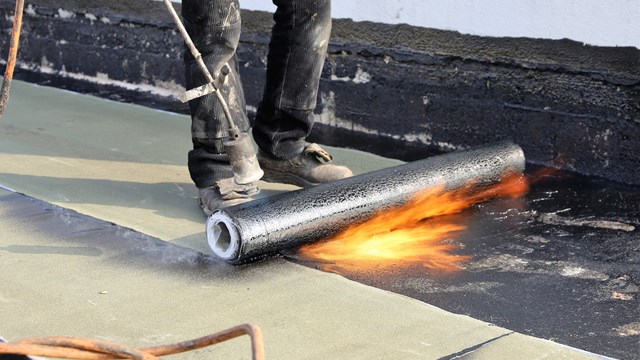
As recently as the 1930’s, only 68 percent of American homes had electricity. By the middle of the last century however, most Americans enjoyed well-lighted homes, and the light had started to spread outdoors as well. Initially, yards and gardens were lit purely for visibility and safety, but once decorative lighting became a reality, there was no turning back. Today exterior lighting provides an exciting way to protect, beautify, and showcase properties, both brand-new and historic.
Simply updating exterior lighting can enhance safety and provide renewed curb appeal for most properties. Technology advancements in low voltage, high-efficiency light-emitting diodes (LEDs) make it possible to actually increase lighting while creating dramatic nightscapes that are both functional and more cost effective. Ultra-efficient LEDs are eco-friendly, using only a fraction of the energy required by the mercury vapor lights used for decades. LEDs can save up to 75 percent in operating costs over other light sources, plus additional savings in maintenance costs thanks to their superior longevity.
Throwing Light on History
Lighting can easily set the mood for social and recreational events while extending the hours residents can safely enjoy outdoor areas. This concept was accidentally discovered in 1700 by King Louis XIV in Paris, The City of Light. The Sun King originally set out to beautify the parks, boulevards, and landscaping in and around Paris—but his urban renewal projects became a target for vandals. In response, Louis XIV implemented an elaborate security system that included 7,000 street lights.
The first reported widespread use of outdoor lights was to prevent property damage, and it worked extraordinarily well—with an interesting twist. King Louis’ innovation created an attractive environment for the city’s inhabitants. Instead of going home or to bed when the sun went down, the residents of Paris took to the streets and developed a nighttime social culture that included new industries and businesses. The classic Parisian street scene of bustling cafes, lively taverns, and chic night-spots would never have been possible had Louis not lit up the evening to protect his projects.
From Lamplight to Lightscaping
Lighting made the difference then and now. It is easy to imagine most condominium residents will be encouraged to enjoy their common areas—indeed, the entire property—more in the evenings when paths, decks, and recreation areas are attractively and safely lighted. Unique architecture, fountains, arbors, trellises and water features are particularly beautiful when enhanced with lightscaping.
That being said, good outdoor lighting involves more than just a couple of amber-colored spotlights pointed at a tree or hedgerow. Expert advice can help a board decide on the types and applications of outdoor lightning. Over the last couple of decades, a whole new vocabulary has evolved to describe lighting designs and techniques. Uplighting, downlighting, path lighting, specialty lighting, underwater lighting and backlighting are just a few of the terms and choices available in the world of outdoor lighting. Fixtures are available in a vast variety of sizes, colors, materials and styles.
Living with LEDs
While exterior lighting is possibly one of the most overlooked aspects of outdoor maintenance and curb appeal, there are many options available for the both the budget-conscious and the trendy.
On the savings side of the ledger, low voltage and light-emitting diodes (LED) lights can save up to 80 percent in energy costs, and those margins are only improving with technology.
“A lot of the manufacturers I work with have made leaps and bounds in LEDs,” says Alex Demidovich of Enterprise Lighting Sales in Manhattan. “I would have to say that is the biggest advancement I have seen. LEDs are a fraction of the wattage of traditional bulbs, and put out the same amount of light. Those are great energy savers for people—they reduce the maintenance time because they are lasting five times longer.”
While the initial costs of installing LEDs may be higher than other lighting options, the energy savings will be evident in the drastically lower utility bills, says Demidovich. He also points out that many companies are offering rebates to customers who are installing energy-efficient lighting, providing another reason to make the switch.
With cost comes another consideration. Demidovich says that because LEDs emit more light, you can cover more area with fewer fixtures, further reducing cost. He says that this aspect is a selling point for boards which have smaller budgets but would still like to make some efficient and attractive changes to their lightscape.
And while early-generation LEDs gave off an unflattering, glare-producing blue light, recent improvements have made them much warmer and more aesthetically pleasing. “If you go to a retail store and buy a cheaper fixture, it will most likely be the ugly blue color,” says Joel Ergas, a principal at Forbes-Ergas Design Associates in Manhattan, “but improvements have been made to the intensity and the color, so the argument about ugly LEDs is getting outdated. You may have to spend a little more to get the good color LEDs, but they are available.”
Lighting Right
Traveling from the city to less populated areas, one sees more natural celestial illumination, a darker night sky, in other words. Erik Beresnoy, store manager at Lighting Expo II in Freehold, New Jersey, says that dark sky lighting is designed to keep artificial light from traveling up where we don't use it, thereby reducing stray light and giving people in more populated areas the same view of the night sky enjoyed by their suburban and rural neighbors.
Another opportunity to save on installation is with quality fixtures. Aluminum fixtures were often used in the past because they are inexpensive and readily available but the material does not react to weather well, and replacement costs can add up. Quality fixtures in brass, bronze, and copper have always been available but now these fixtures come at reasonable pricing and many carry a lifetime warranty. Since aluminum has a relatively short life span, higher quality fixtures may be the better investment. Cathie Daly, a principal at Design East Inc. in Medford, says that she is seeing many boards upgrade to nickel fixtures to give their building a more trendy and modern look and enhance curb appeal.
Small Lights, Big Changes
In many instances, it doesn't take very dramatic changes to make a big difference. Berensoy mentions that motion sensory lighting has been popular in deterring crime and promoting safety across all types of residential properties. “Most motion sensor lights tend to be spotlights and haven't really crossed over into mainstream decorative coach lighting,” he says. “There are some coach lights out there with motion sensors on them, but I feel it is best to use the motion spotlights in conjunction with decorative coach-style lights. This way you get a warm appearance to the property at night and more light from the motion spotlight when you are out there and need it.”
Besides the larger lights in the facade, canopy or security lights, HOAs can also opt to illuminate their walkways and landscaping elements. Ergas describes a recent project at the Churchill condo complex in Murray Hill in Manhattan in which his firm installed rope lighting under a small retaining wall in the circular driveway of the complex. The effect was an ethereal, continuous walkway that was attractive but also provided extra light when entering the building. They also installed LED lighting to backlight a modern sculpture. “It provided good light, didn't take up much space, and was good for the outdoors,” he says.
Exterior lighting can have many applications, whether for safety or aesthetics.
“There's no one-size-fits-all solution. It requires multiple solutions for each particular thing you are trying to accomplish,” says Ergas. “But I do think it enhances the value of the building, just like when you renovate lobbies and hallways, exterior lighting really enhances the value and curb appeal.”
When to Call In the Experts
With the constant advancements in lighting and installation challenges, exterior lighting is not always a do-it-yourself project. In addition to a licensed, bonded, certified electrician, a board will want a company with experience and expertise in landscape lighting design and installation; most companies will offer free consultations and a design rendering. It is always prudent to view properties and/or projects the bidding company has completed.
“It's really difficult to add lighting in some instances but not difficult to consult with a design specialist,” says Daly. “If you are going to go to the expense of reevaluating your curb appeal, typically I find 70 percent of those selections are done by the maintenance staff in house at a really low cost. When they replace lighting, they are usually doing it with the same dated fixture. Rather than doing that, at a really low cost you could hire a professional designer to make those decisions appealing and cost effective to you.”
Daly mentions that designers may be more familiar than board members with the current market trends and innovations in exterior lighting and can steer clients toward a lighting decision that is appropriate for their taste and budget.
Beresnoy agrees, saying that while you should maintain a budget, the cheapest solution may invariably cost you more money in the long run. “When doing large projects, like condominiums, typically builders and board members try to keep costs down by purchasing less expensive products. A few things that should be kept in mind however, is how much you would save on the back end, by purchasing an energy-efficient product made of a more durable material. It’s somewhat similar to doing solar paneling, where you may have to put in a decent initial investment—eventually you could see it pay for itself. By purchasing a more durable fixture, you can limit or completely eliminate the need to replace the fixtures all together.”
Before calling in a landscape lighting professional, board members should prepare a list of questions and expectations in order to achieve the biggest impact for the budget. The up-front sticker price can seem high until the greatly reduced operation and maintenance cost are figured into the return on investment (ROI).
A board may also want to consider moving forward in stages depending on budget constraints. Safety lighting issues will most likely trump aesthetic lighting but reviewing the entire property up front can prevent costly do-overs.
Ergas suggests that boards can implement or update exterior lighting as part of an exterior maintenance' sequence.
Landscaping and ground maintenance is often one of the largest expenses facing an HOA or community association yet the results go unnoticed 50 percent of the time. When lightscapes are created with well-placed lighting, a property is showcased and the results are almost magic. A properly illuminated landscape increases curb appeal 24/7 and adds real and perceived value to the property.
Anne Childers is a freelance writer and a frequent contributor to The New Jersey Cooperator. Editorial Assistant Maggie Puniewska contributed to this article.






Leave a Comment